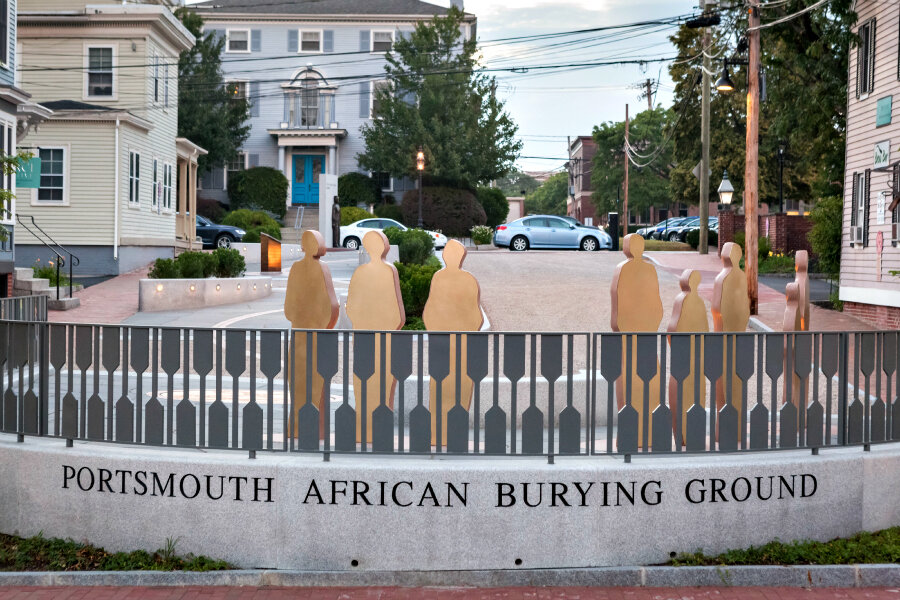A forgotten burying ground becomes a park that honors and remembers
Loading...
During a city project in October 2003, work crews in Portsmouth, N.H., discovered the buried remains of 13 people under a portion of Chestnut Street – remains that later were found to be of African descent.
Historical documents indicate that as early as 1705 the site was referred to as a “negro burying ground” – the only known space of its kind in New England. As Portsmouth grew throughout the 1700s and 1800s, the site was paved, built over, and forgotten by many.
The rediscovery of the remains in 2003 had a profound effect on many in this seacoast community of 21,000 residents. A groundswell of support rose to investigate how the city could pay a proper tribute to those who had been interred there.
“Very soon after the rediscovery, the then-mayor formed a committee to bring honor and respect to those buried there,” says Vernis Jackson, who joined the African Burying Ground Committee in 2004 and was appointed its chair in 2008. “They came, they worked, and made it happen. It is nothing like I had experienced before.”
Mrs. Jackson, a native of Savannah, Ga., and a resident of Portsmouth since 1963, worked closely with city officials, archaeologists, artists, landscapers, fundraising volunteers, and fellow residents in what would become a 12-year process of planning, designing, and constructing a memorial on the site.
The result is a more than $1.2 million, block-long, 6,500-square-foot Portsmouth African Burying Ground memorial park, a contemplative space with sculptures, seating walls, a community plaza, decorative tiles, and lighting. The park aims to blend honor for those re-buried there with an opportunity to educate visitors about the history of the site.
“It was deeply emotional for me when I think of the struggles and hardships that those interred there endured,” Jackson says. “It brings a great deal of pride that I had a part in that process.”
Jackson, who retired in 2000 after 36 years as an elementary school teacher, has long been engaged in the community. In 1974, she worked with a colleague to found an organization dedicated to sharing African-American and African culture and history. And following her retirement, she formed the Sea Coast African American Cultural Center, dedicated to celebrating the lives and achievements of the black community.
Working on the African Burying Ground project involved a special kind of unity and collaboration, Jackson says.
“For me, it was a rare and beautiful experience – the coming together of all of the people in the community,” she says. “The theme of the site is ‘We stand in honor of those forgotten,’ and that is very much what we have done, and what we continue to do.”
Since its completion, the memorial park has received a great deal of attention, including as the subject of a documentary set to be released in the spring. Groups of students from local schools as well as Harvard Universityhave toured the site and studied its history, along with casual visitors and passersby who take time to visit.
“I have not passed there yet since the opening that there was not someone there just reflecting, sitting,” Jackson says. “Each day, someone – and we don’t know who it is – goes there and puts flowers in the hands of the statue that is called Mother Africa.”
David Moore, assistant city manager for special projects and community development director for Portsmouth, worked with the African Burying Ground Committee throughout the project. He describes Jackson as “both a professional and personal mentor.”
“She was a rock for many people during the ups and downs of constructing a public memorial," Mr. Moore says. "just the person you want to lead a powerful public endeavor. I personally am indebted to her, and this city definitely is, too.”
Jackson hopes that other communities will take notice of the collaboration in Portsmouth – and what came of that concerted effort.
“A dedicated group of volunteers spent countless hours working to raise the necessary funds for the project,” she says. “The community responded in a way that was really unprecedented.”
• For more, visit www.africanburyinggroundnh.org.







